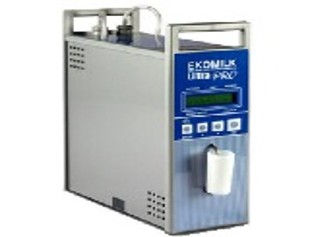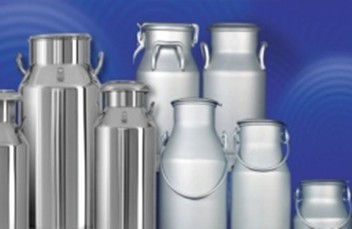
Industrial Chemicals
We are providing various water treatment chemicals for industries to resolve problems arises due to hard water and algae
DISINFECTANT FOR STP/ETP
Chlorination
Chlorine is a widely used and effective chemical disinfectant, particularly for wastewater treatment
Ozonation
Ozone is a powerful disinfectant that can also remove taste, odor, and color-causing compounds
Peracetic Acid
Peracetic acid is another chemical disinfectant used in wastewater treatment
Chlorine Dioxide
Chlorine dioxide is a chemical disinfectant that can be used for wastewater treatment
DEFOAMERS
Defoamers are used in wastewater treatment to reduce or eliminate foam formation.
WATER DECOLORING AGENTS
Decoloring agents, also known as water decoloring agents or wastewater decolorants, are used to remove color from wastewater, primarily from industries like textiles, dyeing, printing, and paper manufacturing
SLUDGE CONDITIONER
Sludge conditioners are used in sewage treatment plants (STPs) to improve the dewatering characteristics of sludge, making it easier to separate water from solids and reduce the sludge's volume
NEUTRALIZING AGENTS
pH Adjustment
Neutralizing wastewater ensures the pH requirements for discharge into the environment or further treatment processes.
Odor Control
Odor control scavenge or neutralize odor-causing compounds like hydrogen sulfide
Biological Processes
Biological processes like the breakdown of organic matter by bacteria also play a role in odor control and overall wastewater treatment
FLOCCULANTS
Polyacrylamides (PAM)
These polymers can be anionic, cationic, or non-ionic, making them suitable for various water qualities and treatment needs.
Inorganic Flocculants
Aluminum sulfate (alum), ferric chloride, and ferric sulfate are also used, particularly for coagulation and flocculation.
COAGULANTS
Ferric Chloride
This is a common iron-based coagulant used in wastewater treatment
Aluminum Sulfate (Alum)
Alum is another widely used coagulant, particularly effective in removing turbidity and other pollutants from water, including those found in sewage
Ferric Sulfate
Ferric sulfate is another iron-based coagulant that can be used in sewage treatment
Aluminum Chloride
This coagulant is also used in sewage treatment and is known for its ability to effectively neutralize charges and form larger particles for easier removal
PAC acts as a coagulant and causing suspended particles to clump together into larger, heavier particles called flocs. These flocs settle out more easily, making them easier to remove from the wastewater
Polyaluminum chloride (PAC)
Bio Culture
Bio culture in wastewater treatment refers to the use of microorganisms, primarily bacteria, to degrade organic pollutants and other contaminants in wastewater. Bio culture can be added to various wastewater treatment systems, including activated sludge, membrane bioreactors, and sequencing batch reactors.
1. Aerobic bio culture
2. Anaerobic bio culture
Milk testing equipment cleaning chemicals
Milk testing equipment’s are used to test milk fats. The sensors used to measure fat is required to clean frequently to get true and accurate readings. Usually the recommended cleaning process of the sensor is mentioned by the manufacturer.
The chemicals needed for cleaning are alkaline and acidic diluted with distilled or DM water, these chemicals and frequently used in the dairy lab.
1. Calgon 101 descaling compound
Application:
Scale remover chemical for heat exchanger, furnaces, cooling tower, chillers, boilers and equipment where water is used as utility.
Properties:
-
red color
-
acidic in nature
-
irritant to skin and smell.
Features
-
Avoids corrosion of costly equipment.
-
Even & complete scale removal.
-
Removal of scale in inaccessible passages, bends and corners.
-
No loss of energy/production even after descaling.
-
Saves time and cost.
Speciality
Calgon- 101 is specially used for equipment of mild steel, copper, frp etc.
Packing
Packing comes in 50 Lts carboy.


2. AQUAROL CWT
Application:
THE BEST SOLUTION FOR SCALE PREVENTION
Aquarol-cwt is a chemical compound is a non-horrendous product manufactured and tested for great results for boiler feed water with technical support from experts.
Properties:
-
Pale yellow in color
-
Dissolves completely in water
-
ph ranges from 2-6
-
Irritation on wounds
Features
-
Precipates dissolved salts present in the water.
-
Avoids redeposition of these salts in the boiler.
-
Acts as anti- scalant in the boiler.
-
Saves frequent acid cleaning cost.
-
Increases life of the boiler.
-
Prevents corrosion.
-
Saves fuel.
Note
packing comes in 50 lts carboy
3. Aldox-Algaeside
Application:
The Best Solution For Algae Prevention
Properties:
-
Yellow Color
-
Acidic In Nature
-
Irritant To Skin And Smell
Features
-
Avoids Destruction Of Costly Equipment.
-
Avoids Formation Of Algae
-
Saves Time And Cost.
Note
Aldox Is Specially Designed For Anti Algae Formation.
Packing
Comes in 50 Lts carboy.

Dairy Chemicals
Herbis ® WEEKLY (ACIDIC CLEANER)
-
Concentrated acidic solution
-
pH of the solution 2
-
High cleaning action with less quantity
-
Removes the fatty material on the sensor
-
Can be used for any type of sensors
Herbis ® MONTHLY (POWER CLEANER)
-
Concentrated acidic solution
-
pH of solution 2
-
High cleaning action
-
Removed deposited fatty and scaly dirt
-
Can be used for all type of sensors
Herbis ® DAILY (ALKALINE CLEANER)
-
Concentrate alkaline non caustic solution
-
Harmless for skin no irritation
-
pH of solution 12
-
Can be used with regular tap water
-
High saponification value
-
1 % solution pH 12

Herbis ® MILK CAN CLEANER
A high performer liquid cleaner for cold water cleaning of milk dairy cans. Suited to all types for milk cans plastic and aluminium both also can be used in can cleaning machines. Economic uses due to high and low foaming characteristics.
Features:
-
Reduces Load On Etp
-
Cleans Very Easily
-
Also Used With Hard Water
-
Replacement For Caustic
-
Soluble In Water
-
Can Be Used With Bare Hand
-
Very Less Use With Water
-
Economical As Compared To Caustic
Technical Specifications:
-
Color - Pale Yellow
-
Viscous – Slightly Viscous
-
Soluble In Water - Soluble
Usage:
-
Mix 10-20 ml in 1 ltr of cold water and apply it to the can surface and clean with water.
-
Flush with water to get clean surface.
-
Also can be used in can cleaning machines with cold water.



















